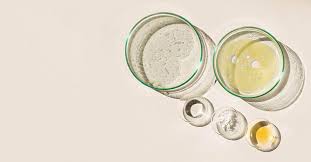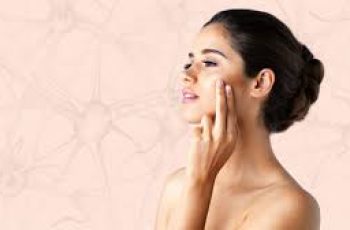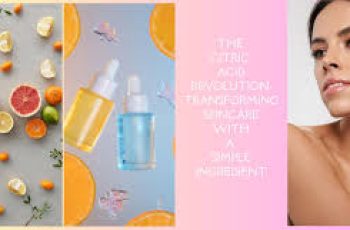
5 Most Effective Anti-Aging Ingredients
“Anti-aging” is probably the most searched term in the beauty industry. We are all passionate about finding the most effective ingredients to help slow down the effects of aging on our skin.
Whether you like it or not, you will age. But that doesn’t mean we have to watch our age. With that in mind, I am going to share with you the 5 most effective anti-aging ingredients and ways to incorporate them into your skincare routine.
5 Most Effective Anti-Aging Ingredients
Finding and maintaining an effective skin care routine is the first step to fighting the early signs of aging. Make sure your skin is kept clean and nourished with the best ingredients for your skin type and all your concerns.
Every day, the skin is exposed to free radicals that are harmful to the skin, such as excessive UV radiation, bacteria, and pollution. If your skin is not protected, signs of premature aging, such as fine lines and wrinkles, may appear. As a quick guide, here is a simple skin care routine that you can use every day to keep your skin microbiome healthy and functional by taking in the right amount of water and oil. Both are important to keep your skin radiant and youthful.
Cleanser: This can be in the form of a gel, cream, or oil, depending on what works best for your skin type. The following steps can penetrate the skin while removing makeup, dirt, and bacteria from the skin.
Acid Toner: Usually contains AHA or BHA (more on this later) and can remove the accumulation of dead skin cells.
Serum: This product is considered one of the most important steps in the regimen because its formula contains a lot of active ingredients that can penetrate deep into the lower layers of the skin.
Moisturizer: Great for providing a layer of protection to the skin from the elements and other skin stressors.
Sunscreen (morning only): Provides protection from skin-damaging UV rays from sun exposure. We will discuss the importance of SPF in more detail.
The quality of your skincare ingredients plays a major role in ensuring that your routine is optimal, combating all signs of aging, and the other benefits that using these ingredients can bring to your skin. Below you will find 5 of the most important ingredients that have a significant impact on all signs of skin aging.
Vitamin C
One of the most commonly used active ingredients in skincare products, Vitamin C has antioxidant properties that protect the skin from free radical damage. These are the main causes of premature aging and further damage the skin, leading to disrupted collagen production and loss of facial firmness. Other skin issues that are often caused by aging include dark spots, which fortunately, vitamin C can also combat. The most effective concentrates to apply to the skin are between 5% and 20%. This depends mainly on the product and formulation, as well as which concentrate is best for your skin type.
Vitamin C is rich in antioxidant properties, which can help counteract the damage to the skin caused by free radicals, which leads to the first signs of aging.
Vitamin C can restore brightness and radiance to your complexion.
Vitamin C can reduce the appearance of dark spots, which is another sign of aging.
Although this ingredient is loved by many, it is notoriously difficult to use correctly and has some side effects, such as increasing the skin’s sensitivity to sunlight, leading to skin irritation in some people. In addition, active vitamin C has a fairly short shelf life. In order to achieve full effects, the product must be stored in opaque packaging and away from direct sunlight. There is another blog post on the site that provides more details on the skin care benefits of vitamin C, which you can check out in more detail.
Vitamin A (Retinol)
Vitamin A, also known as retinol and retinoids, is considered a super ingredient for fighting skin aging. It increases the skin’s daily cell turnover, making the skin continually smoother, brighter, and more radiant. This can also significantly reduce fine lines, wrinkles, dark spots, and even breakouts.
When using retinol, there are some precautions you need to take when introducing it into your daily routine. Retinol is available in a variety of formulas, from prescription to over-the-counter, all with concentrations ranging from 0.25% to 1%. This is an important aspect to consider, as the skin needs to build up a tolerance to the ingredient. We’ve shared some tips on the benefits of retinol for skincare in a previous blog post if you’d like to learn more.
Retinol increases the turnover rate of dead skin cells, making the skin look brighter and more youthful.
Retinol can help fight issues like fine lines, wrinkles, and dark spots.
Retinol can increase collagen production, making the skin look plumper, firmer, and more elastic.
Retinol has many downsides, such as dryness, rashes, and flaking, so it should be introduced to the skin slowly and appropriately.
As mentioned before, retinol has some side effects, so it’s best to follow the directions and apply a small amount once a week to allow your skin to build up its resistance. If you have any questions, consult a dermatologist or skin care professional before using this product on your skin.
AHAs and BHAs
Alpha hydroxy acids (AHAs) and beta hydroxy acids (BHAs) are chemical exfoliants that are commonly found in products such as cleansers, acid toners, serums, and masks. AHAs work on the top layer of the skin to break down the bonds of dead skin cells that can cause your skin to look dry, flaky, and aged. Some of the most popular AHAs mixed into skincare formulas are glycolic acid and lactic acid. Both can reduce signs of aging, such as hyperpigmentation, fine lines, and wrinkles, while lactic acid is best for those with more sensitive skin.
Salicylic acid is the only BHA known to have a positive effect on the skin. While salicylic acid is primarily known for its ability to combat problematic and blemish-prone skin types, it can boost collagen production, which can reverse signs of loss of facial firmness.
Both AHAs and BHAs remove product residue and signs that can damage your skin and cause premature aging.
AHAs and BHAs break up the binding of dead skin cells to the top layer of your skin, which can cause skin to build up and age, leading to fine lines and wrinkles.
AHAs can help restore your complexion’s radiance and reduce dark spots.
BHAs can boost collagen production, making skin firmer and more youthful.
There is a fairly large and extensive family of AHAs and BHAs, and sometimes it can be hard to decide which one is best for you. Read our blog post to learn what they are and how they can benefit your skin.
Sunscreen
It feels like I’m talking about wearing sunscreen every day, but it really is an important step in protecting your skin from premature aging. I’d even go so far as to say: if you only use one skincare product, use sunscreen. Exposure to UVA and UVB rays can lead to a host of skin problems and damage, including skin cancer and other issues such as reduced collagen and elastin production, which can lead to sagging skin and more noticeable wrinkles over time. Dark spots are also a result of sun damage, and they can be easily combated by applying an SPF of 30 or higher every day, even on cloudy, grey days.
Sunscreen protects the skin from damage caused by UVA and UVB rays
Sunscreen prevents pigmentation that leads to dark spots, and prevents new spots from forming
Sunscreen protects the skin and supports the production of collagen and elastin
Sunscreen builds a protective barrier for the skin, allowing your products to penetrate and benefit the skin
Fortunately, thanks to significant improvements, sunscreen formulas are no longer too heavy and whitening for the skin, but lightweight products that are easy to apply, do not clog pores, and do not leave a greasy residue, making them perfect for daily use
Hyaluronic acid
Hyaluronic acid occurs naturally in the body and is known as one of the most commonly used moisturizers. It has the ability to absorb moisture from the air and lock skincare products into the skin. This property means that signs of aging, especially fine lines, are reduced and less noticeable. The overall appearance of the face becomes youthful, plump, and smooth after using hyaluronic acid, which means that this popular ingredient is used in a large number of products in the beauty industry and has just as many admirers.
Hyaluronic acid is a humectant, which means that it draws moisture into the skin.
Hyaluronic acid locks in moisture in the skin, making the face look smoother and reducing the appearance of fine lines and wrinkles.
Hyaluronic acid is gentle and suitable for daily use.
Hyaluronic acid occurs naturally in the body, which means that it does not cause any side effects.
With such unwavering effectiveness, it is no wonder that almost everyone who uses it loves it. On our website, you will find all the benefits of hyaluronic acid for the skin.
These are the 5 most effective anti-aging ingredients. It is important to find products that contain the best quality and quantity of these ingredients concentrates. Therefore, always check the ingredients list on the back of the packaging. If you incorporate these into your daily life, you can see the results of your overall complexion in about 10 minutes. 4 to 6 weeks.


